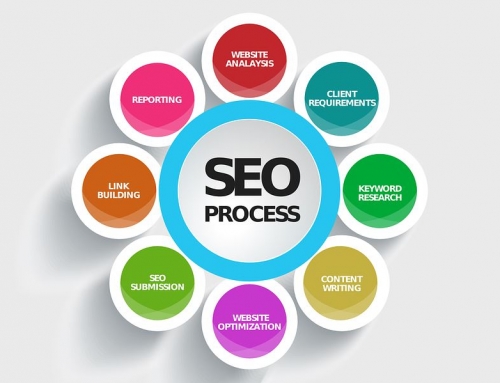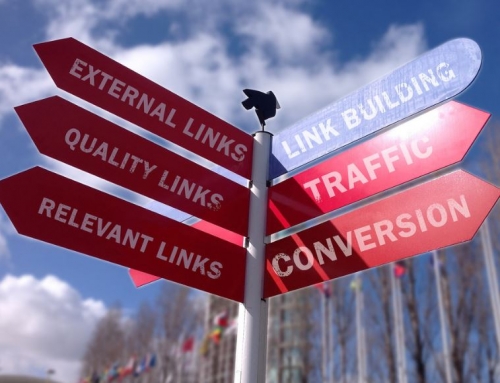What is Technical SEO? A Complete Guide
On-site SEO, link building, keyword research, and high-quality content all help improve your organic SEO rankings. However, they will only take your website so far. Technical SEO forms the foundation of your website’s organic performance. You must go beyond the basics if you want to win against the competition. The searcher online wants to see fast-loading pages and content that is easy to read. You want to give the searcher a top-quality web experience. In this article, we will explore what technical SEO is and how it will impact your website.
What is Technical SEO?
Technical SEO is a process of optimisation techniques for your website to help a search engine like Google locate, understand, crawl, and index pages on your site. Your website must meet all technical requirements in order to improve your organic rankings. These requirements are always changing and becoming more complex in order to keep up with the search engines. Strong technical SEO can help boost the authority of your site, improve your user experience, and increase your site conversions. Google performs 3 things, it crawls pages, indexing, and ranks them. All 3 steps will be done accurately provided you have good technical SEO in place.
The 3 steps of good technical SEO are crawlability, performance, and indexation.
Crawlability:
- Site structure
- Server errors
- Good links
- Crawl budget
- Redirects
- JavaScript
Performance:
Responsive design
Site speed
AMP
Code bloat
Indexation:
- Checking log files
- Internal linking
- Duplicate content issues
- Sitemaps

Understanding Crawling and Indexing
The key goal is to ensure search engines can efficiently crawl and index the content of your site.
Crawling
Search engine bots assess a URL and the content of a site. They look for links on pages and queue those to be crawled. The bots use an XML sitemap to search for the URLs that you want to have indexed on your site. Refresh content that has previously been discovered and indexed.
Indexing
Indexing involves the search engine storing content that has been crawled and rendered for later use. Indexing allows you to store and organise data before a user requests information to speed up the retrieval process. Google’s web indexing system is called “caffeine”. It allows them to crawl and store content more efficiently. Once a page is indexed Google makes sense of the information. This means it extracts things like internal links, meta tags, and structured data.
Canonicalization indexing
Canonicalization is when there are multiple versions of the same page, Google will select one to store in the index. The URL that is selected as the canonical will be the 1 Google shows in search results. Google selects the canonical URL with several different signals these include:
- Redirects
- Canonical tags
- Sitemap URLs
- Internal links
- Duplicate links
Technical SEO Factors for Improving your Sites Performance
There are many technical SEO factors that affect the performance of your site. Once they are identified and corrected by a professional, then you should see an effective and high turnaround of your website. Here are some of the main factors to help improve your website performance.
Page Loading Speed
40% of online users will leave a site if it takes more than 3 seconds to load. This will create and send negative signals to search engines about the quality of your site making it more difficult for it to rank. The site’s structure and loading time are linked such as the code organisation, the hosting server, and the image sizes. Page speed insights a Google tool will score your page loading speed and will indicate any factor you can optimise to encourage improvement. Here are some of the actions that can be performed by an SEO company to improve the site loading speed:
- Reduce the image sizes
- Create accelerated mobile pages
- Compress the server files
Duplicate Content
Duplicate content is an important aspect of technical SEO since it is common and can have a negative impact on your site rankings. Duplicate content is content in both images and text that is seen on several pages on the same domain or across domains. To solve the duplicate issue, you must first identify the pages that have the errors. Siteliner is a specific SEO tool that shows how many pages have duplicate content. Once the pages have been identified, you can show Google which page you want to rank and index. This can be done by applying the canonical tag to the main page’s code. 301 redirects are also another way to prevent pages from competing in rankings giving priority to one of the pages only.
Mobile-Friendly Site
A mobile-friendly site is just as important as site speed. Having a mobile-friendly site is a key factor for displaying a site on mobile searches and even more so for local searches. Your website should be responsive and able to adjust itself automatically so it can be navigated and readable on any device such as mobile phone, tablet, desktop, and laptop. A responsive site is a very important ranking signal by Google algorithms. Mobile-friendly websites have lower bounce rates and higher page views per visit. A friendly and attractive site will attract more users. A mobile phone is a most commonly used device to search for products and services online. Your website should be visually appealing and an enjoyable experience for the user.
Sitemaps
An XML sitemap can be created to help search engines like Google understand your site while crawling it. The sitemap must be submitted to the Google search console so the crawler can locate the web pages and rank them accordingly. The sitemap must follow the XML sitemap protocol. Websites that have isolated pages should have a sitemap. The file will ensure that all pages are indexed and crawled by the bots. It also contains useful information about each page on your site including how frequently it’s updated, what priority it has on your site, and when a page was last modified.
SSL Certificates
In 2014, Google announced that SSL certificates are now a ranking factor. SSL stands for secure sockets layer. It is a security technology that will create an encrypted link between a browser and a web server. An SSL can be spotted easily on a site. The URL of the site should start with ‘HTTPS://’ rather than ‘HTTP://;. Google now wants to see HTTPS with every website. HTTPS websites are more secure and the preferred option. It is important to speak to a professional SEO company to install an SSL certificate on your website.
Track and Fix Site Errors
A technical SEO audit can be performed by an expert SEO company to track and find all errors on a site. There are many tools on the market to help with this, these include Website Auditor, SEMrush, and Moz. Any site issues can be solved in turn improving the overall technical health of a website. Many pages on a site will not index for various reasons. These include:
- URL blocking by robots.txt file
- Server errors
- Non-existent URL (error 404)
- Re-direction errors, such as a loop redirect
- URL blocking by the no-index tag in the page code








